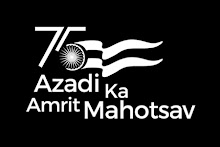
Samrupa, the world’s first cloned buffalo calf, was set to be India’s answer to Dolly the sheep. But unlike Dolly, the first cloned mammal who lived for seven years, Samrupa succumbed to a lung infection on Wednesday, five days after it was born. Scientists at Karnal’s National Dairy Research Institute (NDRI), who created Samrupa on February 6, say the next cloned buffalo offspring is expected in May. Samrupa’s one-year-old surrogate mother belonged to the Murrah breed, Haryana’s pride and the world’s best-known milking buffalo capable of producing 35 kg milk a day. Dr S K Singla, who was part of the six-member team that created Samrupa, said: “We have been working on developing the calf for the past four years. However, we could not save her.” “We are happy that we gave birth to a cloned buffalo using an indigenous cloning mechanism. The next birth is expected in May and another in June,” Dr Singla added. The breakthrough has put India among a select few countries capable of cloning mammals. Scientists from NDRI’s Animal Biotechnology Centre developed a landmark technique, Hand-guided Cloning Technique, which the scientists said was much simpler and an advanced modification of the conventional cloning technique which was used to create Dolly, 13 years ago. “This new technique is less demanding in terms of equipment, time and skill. We didn’t need sophisticated tools like micromanipulators, but conducted the surgery with a simple hand blade,” Dr Singla said. In this technique, the oocytes (female eggs involved in reproduction) isolated from abattoir ovaries, were matured in-vitro (outside the womb and in a lab), treated with enzymes to clear its outer coating and isolated by a handheld fine blade. Then, somatic cells from the ear of a donor buffalo was electro fused with the oocytes, grown in laboratory for a week and the resultant embryos were transferred to recipient buffaloes for the production of the calf of the desired gender. “One of the biggest advantages of this technique is that the calf of a desired sex can be obtained. If we take cells from the ear of a female buffalo, the offspring will be a female,” Dr Singla said. Indian Council of Agricultural Research (ICAR) director-general Mangala Rai said the technology would help in increasing milk production.




No comments:
Post a Comment